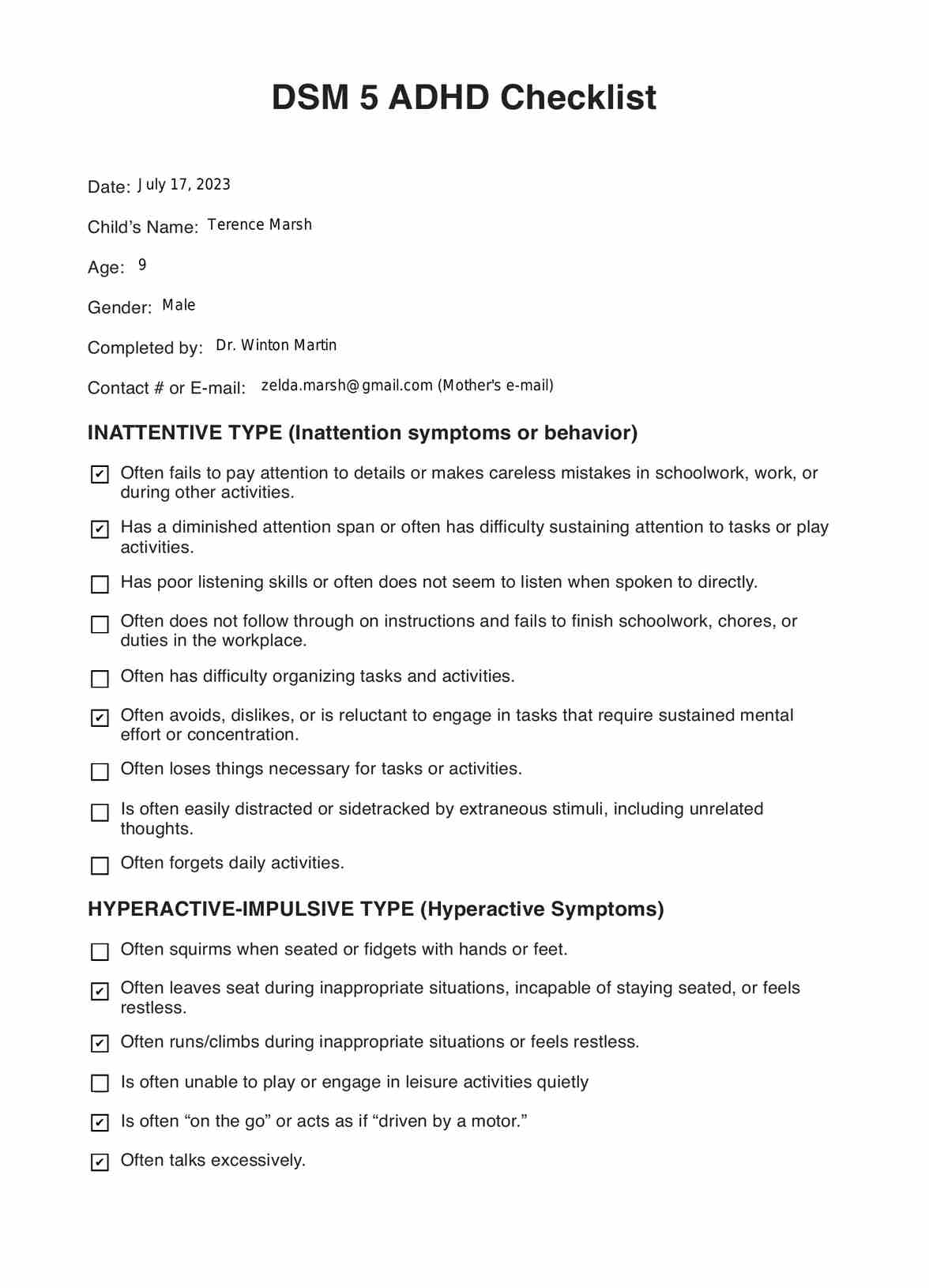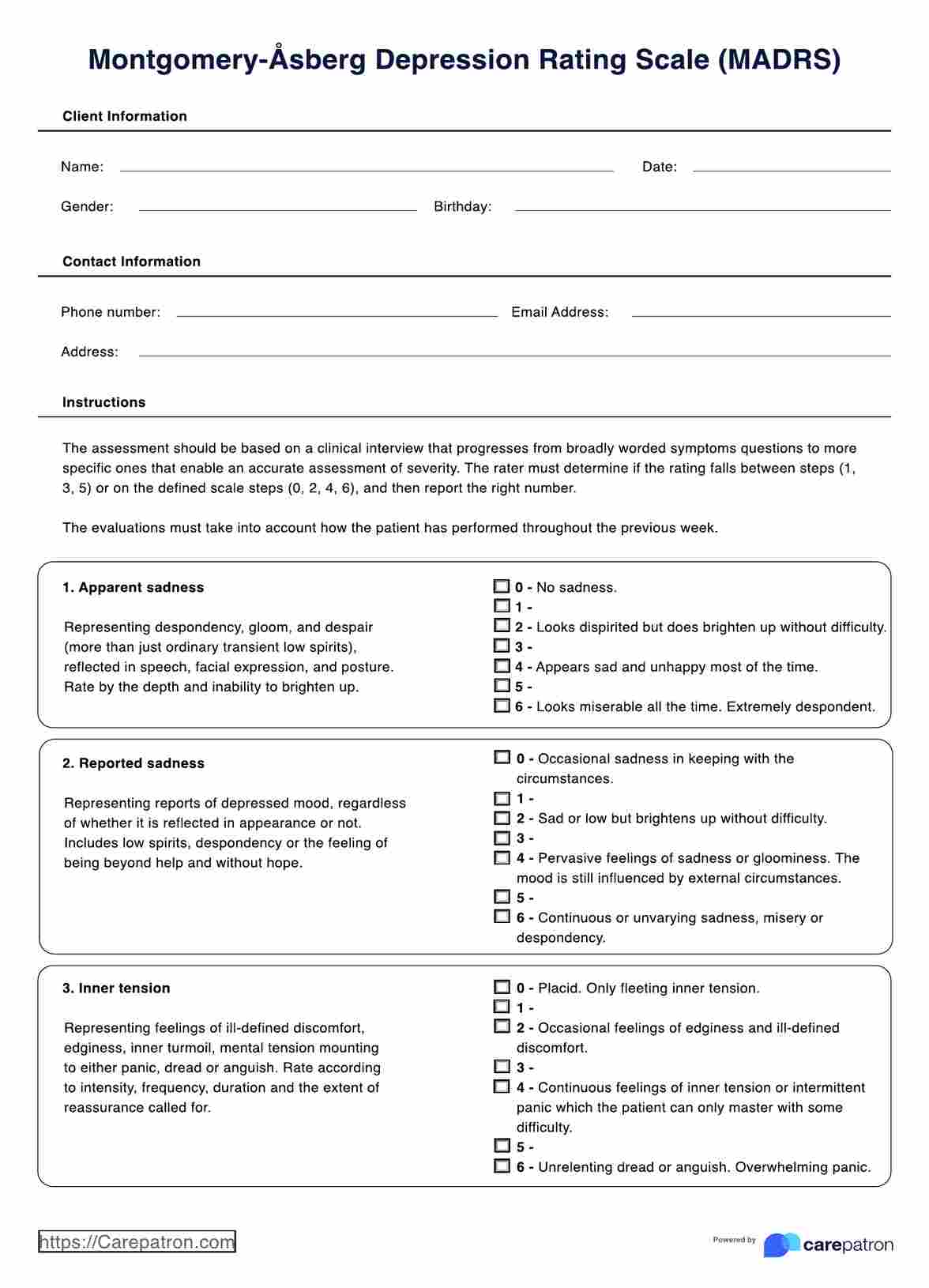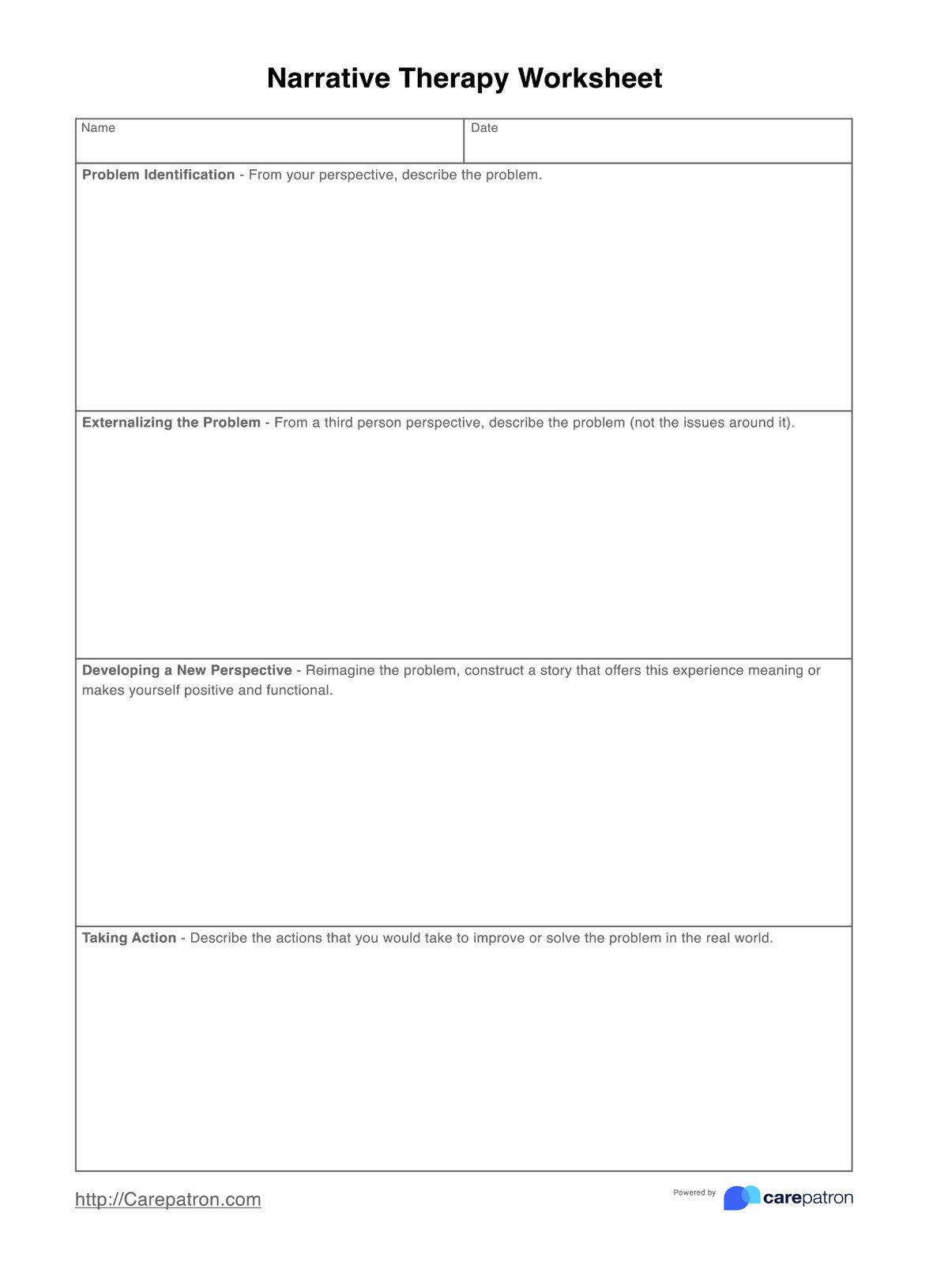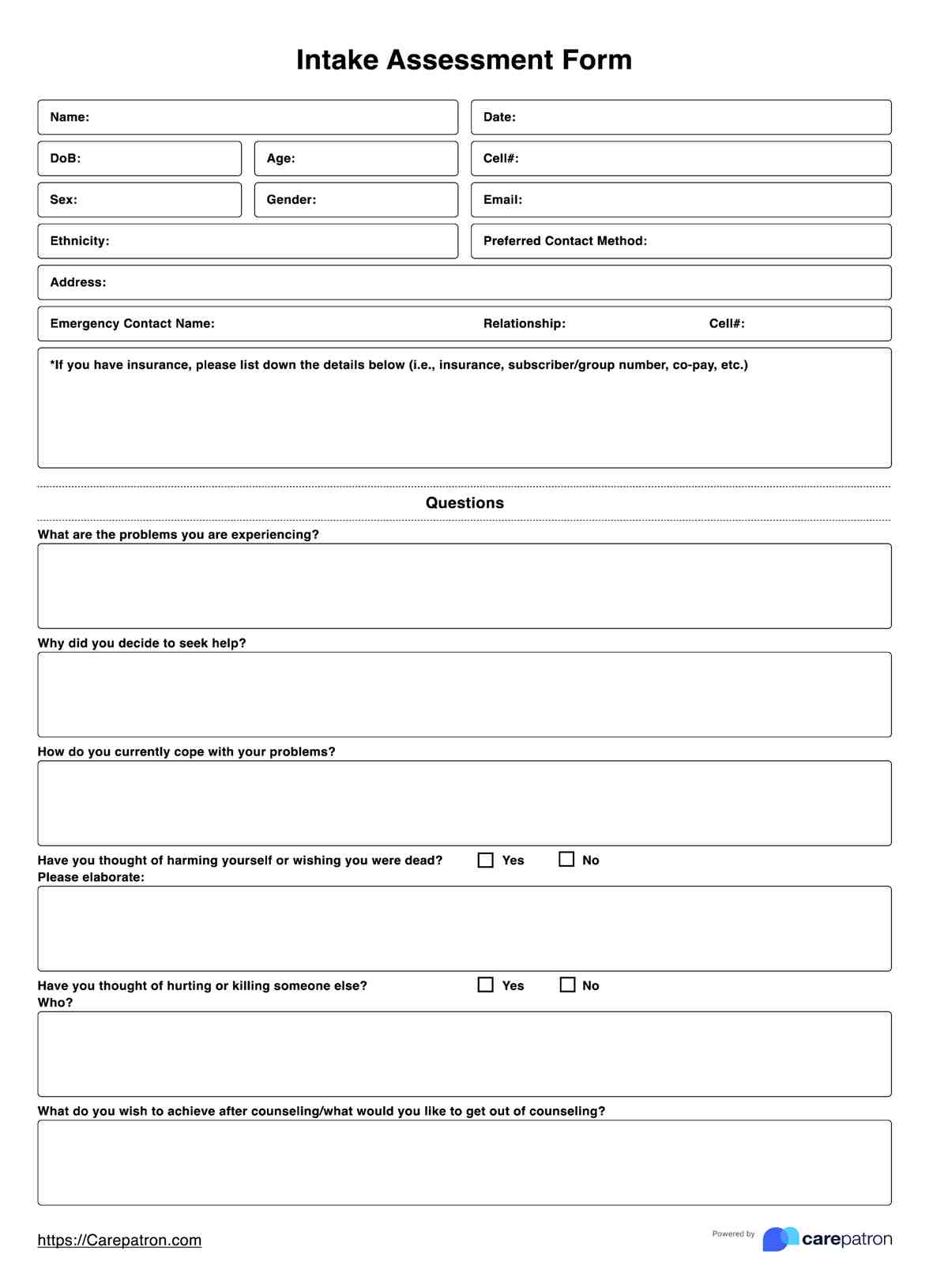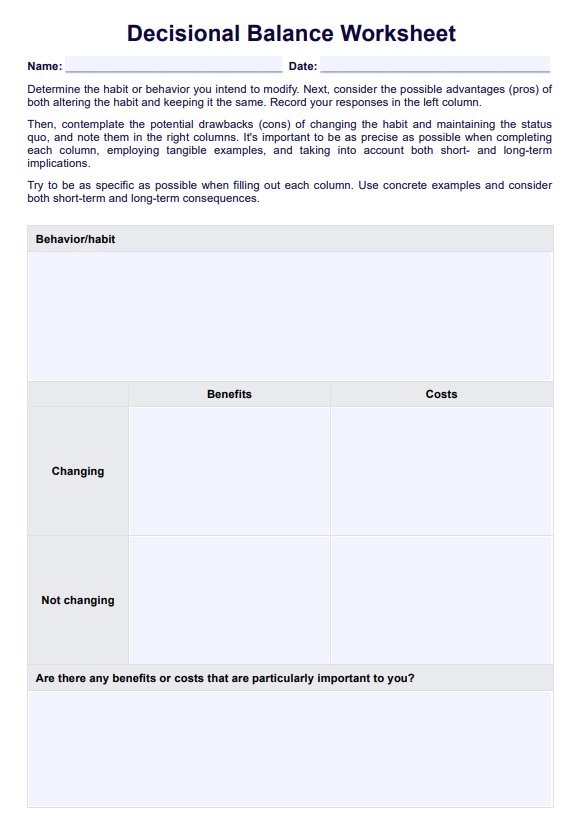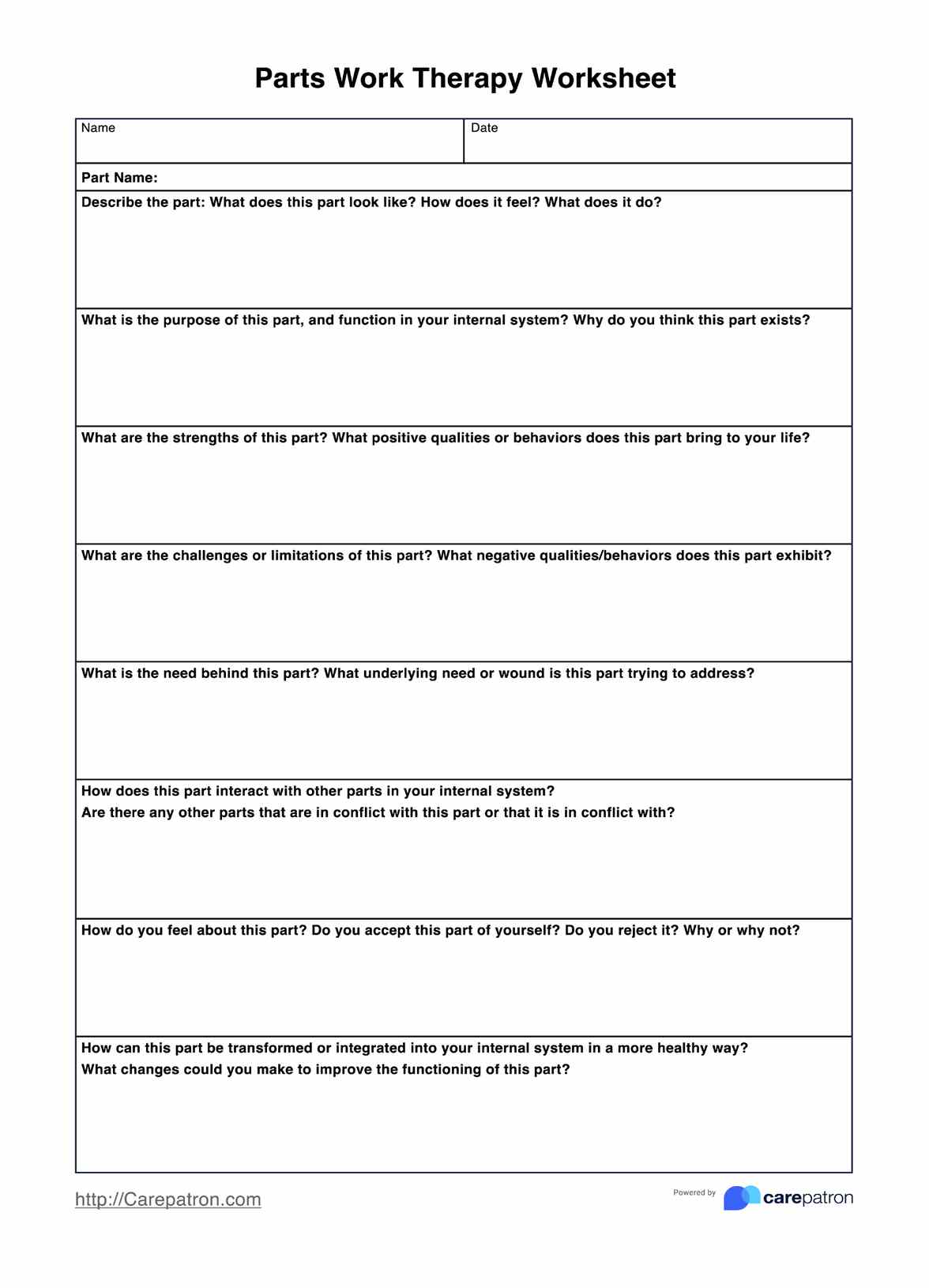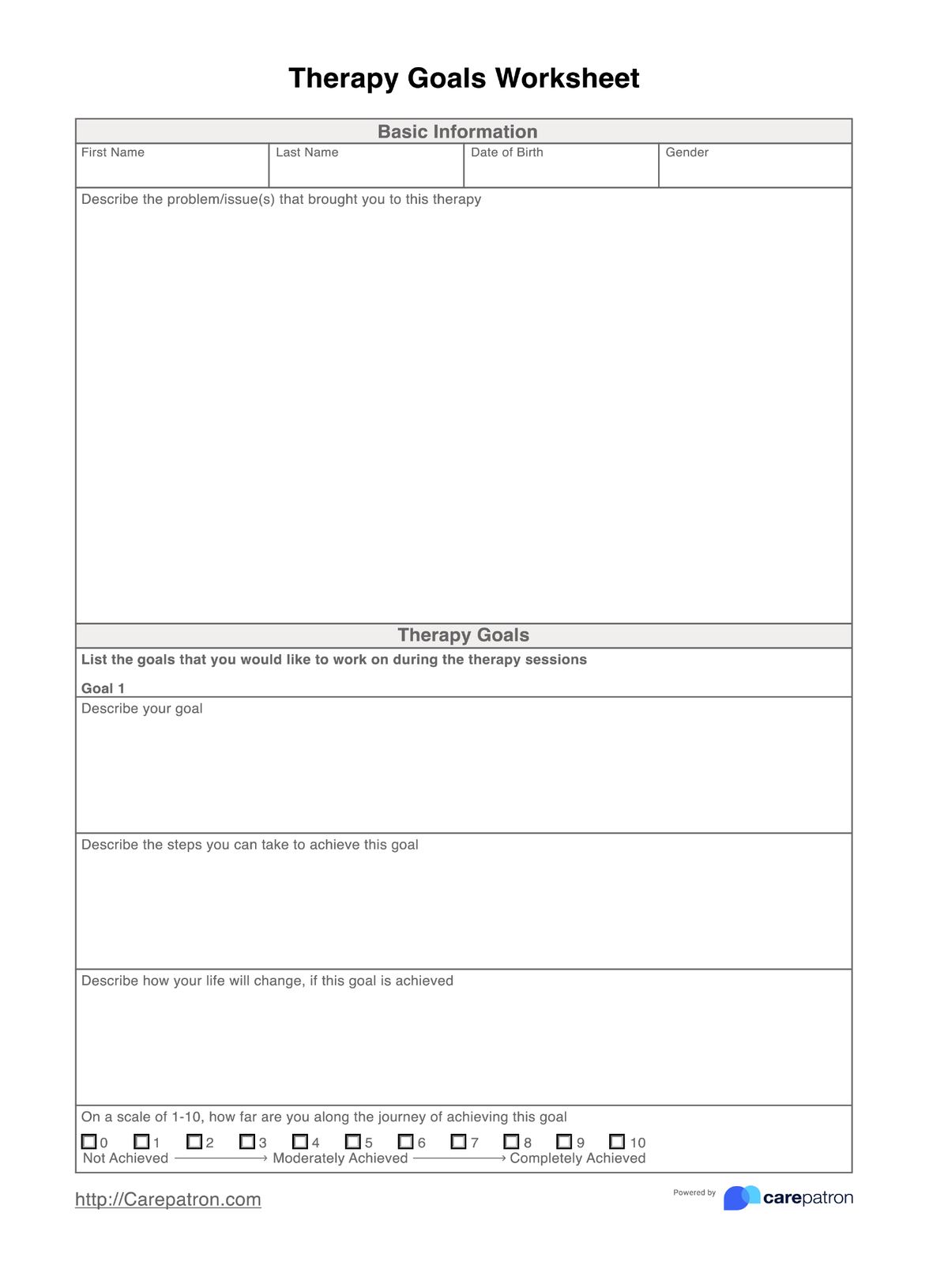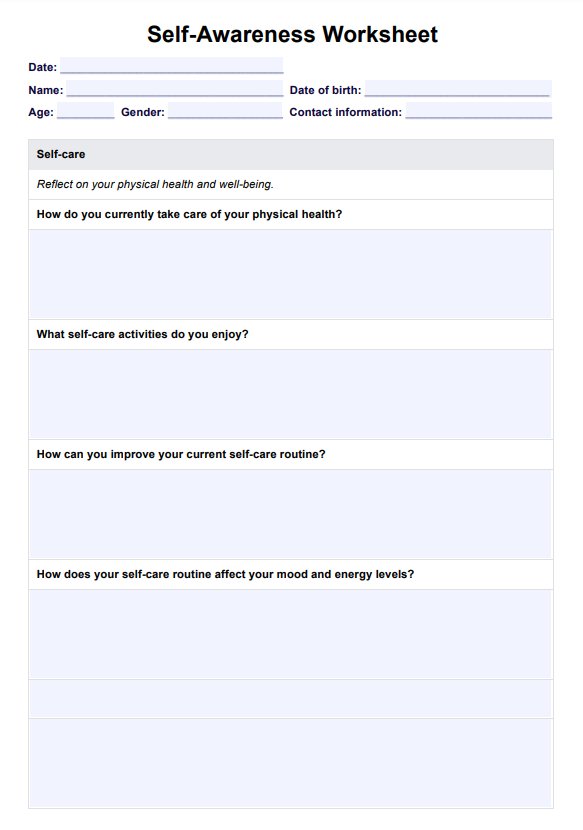Copeland Symptom Checklist
Streamline ADHD assessments with our Copeland Symptom Checklist Template, which is perfect for accurate and efficient symptom tracking.


What is a Copeland Symptom Checklist?
The Copeland Symptom Checklist is a comprehensive diagnostic instrument extensively utilized for identifying symptoms associated with Attention Deficit Disorder (ADD) and Attention Deficit Hyperactivity Disorder (ADHD) in both adults and children.
This detailed checklist is composed of a series of carefully crafted questions aimed at detecting the presence and assessing the severity of various symptoms characteristic of ADD/ADHD. These symptoms include but are not limited to, inattention, hyperactivity, impulsivity, and a range of behavioral difficulties.
Developed to facilitate early detection and efficient management of ADD/ADHD, the Copeland Symptom Checklist is an invaluable tool for diverse users, including healthcare professionals, educators, and parents.
It assists in identifying individuals who may require more comprehensive evaluations or specific interventions. Its structured format ensures a systematic, standardized approach to symptom assessment, contributing significantly to its reliability and effectiveness as a screening tool.
This checklist is a fundamental resource in various settings—clinical, educational, or home. It aids in the initial stages of diagnosing ADD/ADHD, guiding further diagnostic processes and informing treatment strategies. By enabling early identification of symptoms, it plays a critical role in ensuring timely and appropriate care for individuals with ADD/ADHD.
Copeland Symptom Checklist Template
Copeland Symptom Checklist Example
How does it work?
Step 1: Access the checklist
To begin, access our Printable Copeland Symptom Checklist Template. This template is designed to be user-friendly and easily accessible, allowing for widespread use in various settings, including clinics, schools, and homes.
Step 2: Complete the questions
The checklist is then completed by the individual under assessment, a caregiver, or a healthcare provider. The questions should be answered based on observed behaviors and symptoms, providing a comprehensive view of the individual's symptomatology.
Step 3: Score the responses
After completion, each response is scored according to the provided guidelines. These guidelines typically involve assigning scores that reflect the frequency or intensity of the symptoms reported. The scoring process is straightforward and standardized, allowing for clear and objective assessment.
Step 4: Interpret the results
Finally, the total score obtained from the checklist is evaluated to determine the likelihood of ADD/ADHD. A higher score generally indicates a greater probability of the presence of ADD/ADHD, suggesting a need for further professional assessment and potentially a more detailed evaluation.
When would you use this template?
The Copeland Symptom Checklist Template is a versatile tool primarily employed in various scenarios for the assessment of Attention Deficit Disorders (ADD) and Attention Deficit Hyperactivity Disorder (ADHD). Its applications extend across multiple domains, making it an essential instrument in diverse professional and personal settings.
- In healthcare settings: Healthcare professionals frequently use this checklist during initial evaluations of patients suspected of having ADD/ADHD. It is an integral part of the diagnostic process, helping clinicians gather essential data about the patient's symptoms and their impact on daily functioning. Pediatricians, psychiatrists, and primary care physicians often incorporate this checklist into their assessment routines.
- Educational contexts: Educators and school psychologists find the Copeland Symptom Checklist particularly useful in identifying students who exhibit signs of ADD/ADHD. It assists in the early recognition of symptoms, enabling timely interventions that can significantly improve the educational outcomes and overall well-being of affected students.
- For parents and caregivers: Parents and caregivers use the checklist as a preliminary screening tool when they observe behaviors in their children that may indicate ADD/ADHD. The checklist guides them in understanding the range and severity of symptoms, providing a basis for seeking further professional advice and support.
The Copeland Symptom Checklist Template is an invaluable resource across various sectors, aiding in the early detection and ongoing management of ADD/ADHD. Its broad applicability ensures that individuals with these disorders receive timely and appropriate care, whether in healthcare, educational, or home environments.
What do the results mean?
The results derived from the Copeland Symptom Checklist offer significant insights into the potential presence and intensity of ADD/ADHD symptoms in an individual. This checklist provides a score reflecting the severity of attention, hyperactivity, and impulsivity symptoms through its comprehensive set of questions.
- High scores: A higher score on the checklist typically indicates a greater likelihood of ADD/ADHD. It suggests that the individual exhibits many symptoms at a frequency or intensity that warrants further evaluation. In such cases, parents, educators, or healthcare professionals should seek a comprehensive assessment from a qualified specialist.
- Interpreting results: While high scores signal a need for additional assessment, they do not constitute a definitive diagnosis of ADD/ADHD. The checklist is a screening tool and should be part of a broader diagnostic process that includes clinical evaluations and possibly other diagnostic tests.
- GuidingiInterventions: For those already diagnosed with ADD/ADHD, the checklist can also be used to monitor symptom progression and the effectiveness of interventions over time. This ongoing evaluation is crucial in managing the disorder effectively and making necessary adjustments to treatment plans.
Our Free Copeland Symptom Checklist is a crucial step in the journey towards understanding and managing ADD/ADHD, guiding individuals and professionals in making informed decisions about further assessments and interventions.
Research & evidence
The development and usage of the Copeland Symptom Checklist are deeply rooted in developmental and behavioral psychology. Its creation was driven by the need for a reliable, easy-to-use tool to identify symptoms of ADD/ADHD—a need underscored by a wealth of research emphasizing the importance of early detection and intervention in these conditions.
- Foundational research: Studies in developmental psychology have long indicated that early identification of behavioral and attention disorders can significantly improve long-term outcomes for individuals (Barkley, R. A., 1998). The Copeland Symptom Checklist was developed in response to this research, providing a practical means of early symptom identification.
- Evidence-basedpPractices: The checklist aligns with evidence-based practices in psychological assessment. It encapsulates key symptoms of ADD/ADHD, as outlined in diagnostic criteria established by authoritative bodies like the American Psychiatric Association (APA).
- Supporting studies: Research has consistently supported the use of symptom checklists in the initial assessment stages of ADD/ADHD. Studies have shown that checklists like Copeland's can accurately reflect the presence of core symptoms, thereby guiding further diagnostic and treatment processes (DuPaul, G. J., & Stoner, G., 2003).
References
Barkley, R. A. (1998). Attention-deficit hyperactivity disorder: A handbook for diagnosis and treatment. Guilford Press.
DuPaul, G. J., & Stoner, G. (2003). ADHD in the schools: Assessment and intervention strategies. Guilford Press.
Commonly asked questions
The Copeland Symptom Checklist is usually pre-designed and available for use as a standardized tool.
Copeland Symptom Checklists are used when symptoms of ADD/ADHD are observed in individuals, either by healthcare professionals, educators, or caregivers.
Copeland Symptom Checklists are completed by answering questions about the individual's behaviors and symptoms, followed by scoring and interpretation
The Copeland Symptom Checklist is created by behavioral psychology experts and designed for use by professionals and caregivers without the need for customization.

.jpg)
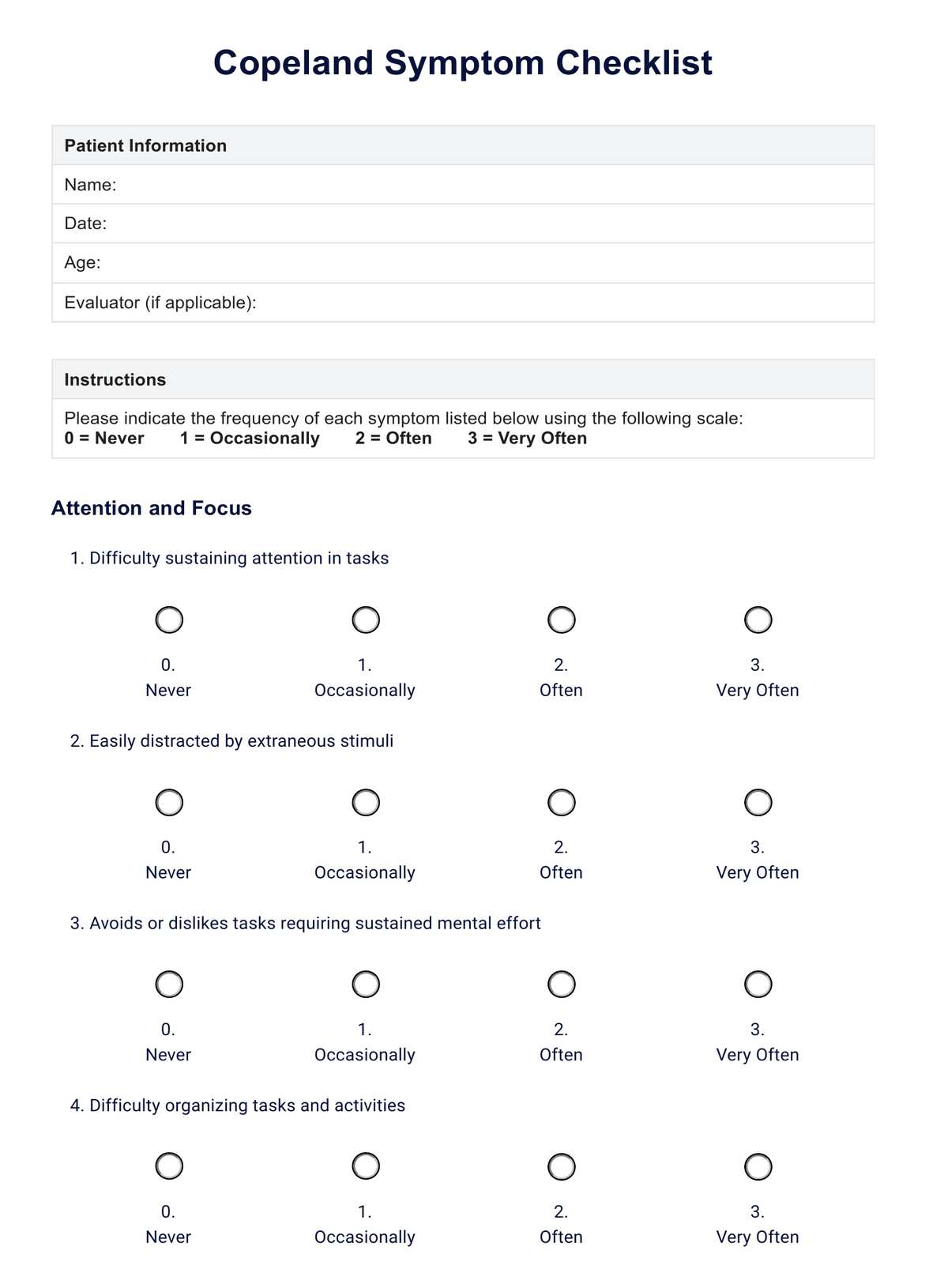
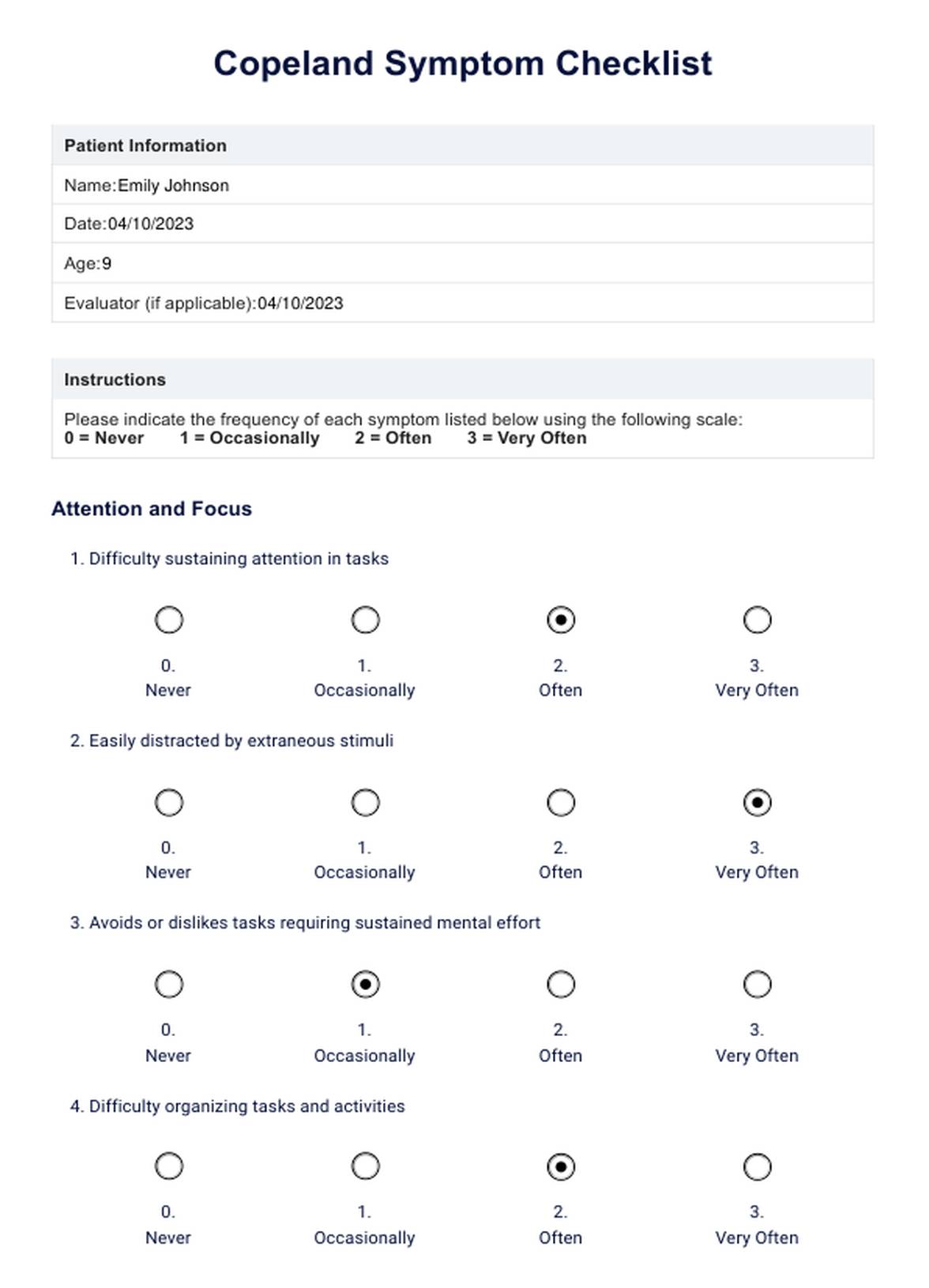


















-template.jpg)


















































































